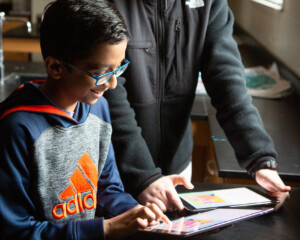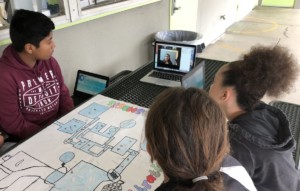Can Edtech Be Used to Better Serve Daydreamers?
Key Points
-
We need more research around mind wandering, distraction and daydreaming.
-
Edtech tools show promising use cases for help smooth over gaps caused by distraction, mind wandering and other natural brain processes.

By Caitlin Mills
Focus.
Focus is an essential component of learning and yet it is something that eludes almost everyone at one point or another.
Think back to a time when you were listening to a lecture or reading a book. Despite your best efforts to pay attention, your mind inevitably drifted off to something completely unrelated. You may not have even realized it at first, and the people around you likely didn’t either. The next time you’re having a casual conversation, notice how often your thoughts switch to something else. Your mind might even be wandering as you are reading this now.
Such instances of being internally off task are often referred to as “mind wandering,” and it can be a significant barrier to learning for some students. But what if it didn’t have to be?
What we’ve learned about this “off task,” mind-wandering phenomenon is striking. First, it happens all the time and to everyone (up to 50 percent of our waking lives!), and students are no exception, regardless of their age. What is of concern, however, is that students’ whose minds wander off task may struggle to understand the material they are learning because they are missing key bits and pieces of information along the way.
This leads to a question: Can we offer support to mitigate this kind of disengagement? The answer may start with data and technology – specifically machine learning.
Recent work by the University of Minnesota and the University of Pennsylvania, funded by The Tools Competition and the Bill & Melinda Gates Foundation, hopes to address the need for more research around mind-wandering and explore potential solutions that can help teachers and others manage it better.
Let’s delve into the importance of data first. Why is it so vital in deducing whether or not we can fine tune our focus? Because there is still much to learn and understand about how detrimental – or beneficial – our internal distractions can be. After all, some types of mind-wandering may indeed help with creativity and problem solving, according to some research. But at what point does it become an impediment to learning? Are certain populations more at risk of negative consequences than others?
To address these questions, we need more data and we need it from more diverse groups of people.
Most of the research in this area has used relatively small samples and in primarily WEIRD (western educated industrialized rich democratic) populations. This makes it difficult for us to make generalizations—particularly in terms of understanding why students’ minds drift off task in the first place. Some students may use their internal distractions as a helpful escape from boredom or a time to come up with creative ideas. However, if some groups of students have more stress in their lives, one theory suggests they may end up distracted in their own minds more often. In this way, it’s easy to see how mind wandering could impede, rather than support, their learning. We need more data from more students to understand the difference and design effective interventions.
And while teachers certainly have umpteen tips and tricks to keep hold their students’ attention, overworked educators could always use more tools in their toolbox to ensure that distracted students don’t slip between the cracks.
Data can provide greater insight into the benefits and risks of mind wandering. And technology may also help us better manage this phenomenon. There is initial evidence that—using machine learning—we can actually detect when students’ minds wander and offer support in real-time.
A real-time intervention system, called the EyeMind Reader, can read a student’s gaze to determine if they are off-task. The system can then intervene at critical points to ensure that students get a chance to re-focus and re-engage with the lesson.
Such interventions can help ensure that students understand key concepts, plot points and information as they progress in their studies, rather than creating gaps in their understanding. After all, a student whose mind wanders at a key point in To Kill A Mockingbird won’t grasp why Boo Radley is the real hero of the story.
Now, to criticize my own work, any tech-based solution for mind wandering is nowhere near scalable to all students. The machine learning models I referenced were based on data collected from a few hundred (primarily White) students and the equipment cost thousands of dollars, a price that is likely out of reach for most schools.
As an analogy, consider how luxury cars were early adopters of built-in eye-tracking technology to help jolt inattentive drivers back to reality, while most cheaper models do not offer this feature. Do we want to perpetuate similar class distinctions in education? Probably not. But more data, along with more scalable technologies, can close any potential gaps.
We are creating a large-scale dataset that will be free and publicly available to any researcher interested in this topic. The dataset will include data streams that both are affordable and scalable, such as webcam-based eye-tracking (that does not store any student videos). Our hope is that easy access to diverse data will allow the research and education community to understand this ubiquitous phenomenon better, while also enabling better measurement and intervention methods to enable short- and long-term student success.
After all, we want our students to be dreamers, but ensuring that they absorb the necessary information – without distraction – will enable and equip them to be “doers” as well.
Caitlin Mills is an Assistant Professor at the University of Minnesota where she researches the intersection of cognitive psychology, computer science, and education. She is particularly interested in mind wandering: its neural correlates, relationship to affect, and impact on learning.







0 Comments
Leave a Comment
Your email address will not be published. All fields are required.